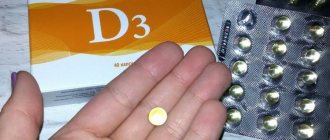To do or not to do, to take or not to take medicine, to take a test or not to take a test. We are always faced with a choice and are often afraid of making a mistake. Iron can be said that you can’t go wrong with iron.
The adult human body contains about 3–4.5 g of iron. More than half of the iron is represented by heme in the composition of hemoglobin, a third is stored in the depot in the form of ferritin and hemosiderin. Moreover, iron deficiency is the most common deficiency condition worldwide, silently leading to anemia.
The main causes of iron deficiency:
Reduced intake of iron into the body due to impaired absorption due to diseases of the gastrointestinal tract, fasting, refusal, or reduced consumption of foods containing iron.
Increased iron loss during chronic, repeated blood loss (uterine, gastric, intestinal, etc.), as well as during acute massive bleeding.
Increased consumption of iron by the body in children during periods of growth, in women during pregnancy and subsequent breastfeeding of the child.
What tests show iron deficiency?
- Be sure to look at a general blood test with a leukocyte formula, since iron deficiency ultimately leads to the development of anemia. Iron deficiency anemia is indicated by a decrease in hemoglobin levels, an indicator of MCV (erythrocyte hypochromia). Often, the examination begins when there are symptoms of anemia (pallor, weakness, dizziness, loss of strength, decreased performance and attention, brittle nails and hair, etc.).
- Decreased serum iron concentration
- Increasing the total iron-binding capacity of serum
- Decreased transferrin saturation coefficient with iron
- Decreased serum ferritin concentration
It is recommended to take tests in the morning, from 8 to 11 am, since the level of iron in the serum is higher in the morning. They should also be taken in the absence of inflammation, which helps lower transferrin levels and increase ferritin levels.
The iron content in the serum is checked 5-7 days after taking vitamin-mineral complexes and dietary supplements containing iron, or short-term use of iron supplements.
Contraindications and indications for Totem from the instructions
The drug is prescribed to patients with pathologies identified by diagnostic examination:
- iron deficiency anemia – for patients older than 3 months;
- hypovitaminosis - for people at risk: blood donors, pregnant women, newborns (from mothers with documented iron deficiency).
Totem is contraindicated:
- in anemic conditions not associated with insufficient iron intake;
- exacerbation of gastrointestinal ulcers;
- thalassemia, hemochromatosis, hemosiderosis;
- poisoning with lead, manganese, copper;
- intolerance to the component composition;
- hepatolenticular degeneration, etc.
Increased caution is needed when treating patients with inflammatory processes in the small intestine, colon, diverticulitis, and granulomatous lesions of the gastrointestinal tract.
The medicine is approved for the treatment of pregnant women; it is contraindicated in breastfeeding due to the high probability of the active components passing into milk.
How is iron deficiency treated?
It is necessary to identify and eliminate the cause of iron deficiency and adjust nutrition.
If these measures do not help, and iron loss is significant, your doctor may prescribe iron-based medications. Duration of treatment with iron preparations for the purpose of restoration and replenishment of iron reserves in the depot:
- for hidden iron deficiency 1-2 months,
- for mild anemia 3 months,
- with moderate anemia 4.5 months,
- for severe anemia 6 months.
Of course, first of all, iron supplements are used in the form of tablets, drops, capsules, syrups. If your doctor has prescribed you iron supplements, you need to be prepared for long-term and comfortable treatment. This will help by following simple rules.
The dosage of the drug is also determined by the presence of anemia (this is the full therapeutic dose) and the type of iron ion that is included in the drug.
Totema 10ml 20 pcs. oral solution
pharmachologic effect
Iron preparation.
Composition and release form of Totem 10 ml 20 pcs. oral solution
Solution - 1 amp. (10 ml):
- Active ingredients: Iron gluconate dihydrate, amount corresponding to elemental iron - 50.00 mg; Manganese gluconate, amount corresponding to elemental manganese - 1.33 mg; Copper gluconate, amount corresponding to elemental copper - 0.70 mg;
- Excipients: glycerol, dextrose (glucose), sucrose, anhydrous citric acid, sodium citrate dihydrate, sodium benzoate, polysorbate 80, caramel color TPS (E150c), “Tutti-frutti” flavoring, purified water.
10 ml in two-ended ampoules made of yellow glass type III.
10 ampoules in cardboard pallets, 2 pallets with instructions for use in a cardboard box.
Description of the dosage form
Dark brown liquid with a characteristic odor. There may be some slight sediment.
Directions for use and doses
Inside, before meals. The contents of the ampoule are dissolved in plain or sweetened water. Shake before use.
Tear a piece of cardboard from the pack along the dotted line and bend it in half to safely break the ends of the ampoule. Break the ampoule on both sides, as shown in the figure, and pour the contents of the ampoule into a glass.
Doses
The daily dose can be divided into several doses or taken at a time. The daily dose of the drug depends on the degree of iron deficiency (see table of daily doses).
Daily doses of the drug Totema® for the prevention and treatment of iron deficiency anemia in adults and children from 3 months
| Age | Prevention of IDA in risk groups | Treatment of IDA |
| Dose of the drug Totema® (in 1 ampoule 10 ml of solution = 50 mg of iron gluconate) | ||
| Children from 3 months to 1 year | Based on 3 mg/kg of child’s body weight | |
| Children 1 -5 years old | Based on 3 mg/kg of child’s body weight | 50 mg/day (1 ampoule) |
| Children 6-12 years old | 50 mg/day (1 ampoule) | 100 mg/day (2 ampoules) |
| Children over 12 years of age and adults, including blood donors | 50 mg/day (1 ampoule) | Mild degree 100 mg/day (2 ampoules) |
| Average degree 150 mg/day (3 ampoules) | ||
| Severe 200 mg/day (4 ampoules) | ||
| Pregnant women (starting from the second trimester); nursing mothers | 50 mg/day (1 ampoule) | Mild degree 100 mg/day (2 ampoules) |
| Average degree 150 mg/day (3 ampoules) | ||
| Severe 200 mg/day (4 ampoules) | ||
Duration of use
The duration of use in children and adults is determined individually. During treatment, it is recommended to periodically determine the level of hemoglobin, ferritin, and serum iron in the blood.
The duration of treatment for IDA in children and adults can be up to 6 months, depending on the severity.
Treatment of IDA in pregnant women should be carried out until hemoglobin levels normalize. The duration of the course of prevention of iron deficiency, including in risk groups, can be 1-2 months.
Pharmacodynamics
Totema® is a combined antianemic drug containing divalent iron in the form of an organic salt of iron gluconate, as well as manganese gluconate and copper gluconate.
Iron, being part of numerous cellular structures and participating in the activity of many enzymatic systems (cytochromes, catalases), plays a very important role in oxygen transport and oxidative metabolic processes, and is also an important element of the human body, which is especially necessary for the formation of hemoglobin.
Pharmacokinetics
Suction
Iron is absorbed primarily in the duodenum and jejunum. Maximum absorption is observed when iron is taken on an empty stomach. Absorption varies and depends on body iron stores and physiological needs. In iron deficiency conditions, its absorption increases.
Distribution
After absorption, the bulk of the iron binds to transferrin and is transported to the bone marrow, where it is taken up by erythroid cells of the bone marrow for the synthesis of hemoglobin; the rest is contained in the blood and deposited in organs in the form of ferritin, hemosiderin, and myoglobin.
Removal
A small amount of iron is excreted from the body after the cyclic destruction of the hemoglobin molecule.
Indications for use of Totem 10ml 20 pcs. oral solution
Treatment of iron deficiency anemia (IDA) in adults and children from 3 months of age.
Prevention of iron deficiency in risk groups: during pregnancy, in children born from a mother with iron deficiency, in blood donors.
Contraindications
- Anemia not associated with iron deficiency;
- hemochromatosis, hemosiderosis;
- thalassemia;
- peptic ulcer of the stomach and duodenum in the acute stage;
- lead intoxication;
- hypersensitivity to the components of the drug;
- children up to 3 months;
- copper or manganese intoxication, Wilson-Konovalov disease;
- sucrase/isomaltase deficiency, fructose intolerance, glucose-galactose malabsorption.
With caution: diabetes mellitus, inflammatory bowel diseases (enteritis, diverticulitis, ulcerative colitis, Crohn's disease).
Application of Totem 10ml 20 pcs. solution for oral administration during pregnancy and lactation
Pregnancy
No negative effects of the drug on a pregnant woman, fetus or newborn have been identified, therefore, the drug can be used during pregnancy.
Breast-feeding
Due to the lack of data on the penetration of the drug into breast milk, women are advised to refrain from breastfeeding while taking the drug during lactation.
special instructions
This drug is not recommended for the treatment of hyposideremia (decreased serum iron levels) in inflammatory syndrome.
Taking iron supplements should, if possible, be carried out simultaneously with eliminating the causes of iron deficiency.
1 ampoule of the drug contains 1/4 of a bread unit, the maximum daily dose (in 4 ampoules of the drug) is 1 bread unit.
Patients with diabetes should take into account that 10 ml of the drug contains 3 g of sucrose and 0.08 g of glucose.
To avoid darkening of tooth enamel, the solution should be swallowed immediately and not retained in the oral cavity.
The drug Totema® contains a small amount of ethanol, less than 100 mg/1 ampoule.
During treatment with iron supplements, patients may experience black stool, however, this does not require medical intervention.
During treatment with iron supplements, a stool occult blood test may give a false-positive result.
Impact on the ability to drive vehicles and operate machinery
There is no data on the negative effect of the drug on the ability to drive vehicles and other mechanisms.
Overdose
Overdose of iron salts
An overdose of iron salts is possible both with accidental intake of large doses of the drug, and with regular use in permitted doses, and is especially dangerous in children. Oral doses of iron of 20 mg/kg and above are considered toxic. An iron concentration in the blood serum of 5 mcg/ml or higher indicates severe poisoning with iron salts.
An iron dose of about 60 mg/kg is considered extremely dangerous for children. In children, intoxication with iron salts can lead to death if medical care is not provided in a timely manner.
In this regard, iron supplements should be stored out of the reach of children.
If you suspect an overdose of iron salts, you should immediately consult a doctor!
Immediate measures before providing medical attention: gastric lavage with clean water (you need to drink several glasses of water and induce vomiting).
Acute overdose
An acute overdose of iron salts can occur in several stages:
- Phase 1 of intoxication (the first 6 hours after an overdose): nausea, vomiting, diarrhea mixed with blood, abdominal pain, weakness, pale skin, cold sticky sweat, acidosis, weak pulse, decreased blood pressure, palpitations, depression of the central nervous system of various types degree of severity up to coma, convulsions.
- Phase 2 of intoxication (6-24 hours after an overdose): temporary stabilization of the condition.
- Phase 3 of intoxication (24-48 hours after overdose): renal and liver failure, jaundice, metabolic acidosis, collapse, fever, pulmonary edema, shock up to coma.
- Phase 4 of intoxication (several weeks after overdose): liver damage, intestinal obstruction.
Treatment
If an overdose of iron salts is suspected, treatment should be started immediately.
Children.
- In the first hours after an overdose, vomiting should be induced.
- Rinse the stomach. Laxatives should not be used in young children due to the risk of diarrhea. The patient requires constant monitoring; in case of possible aspiration of vomit, suction and oxygen may be needed. In case of more severe intoxication in children and the development of subsequent stages of poisoning, therapeutic measures should be carried out by a doctor.
- The concentration of iron in the blood plasma should be constantly monitored.
- In case of serious poisoning, in case of shock or coma with a high level of iron in the plasma, it is necessary to immediately provide assistance and begin administering a solution of a specific iron antidote - deferoxamine, according to the instructions for use of the drug. Shock, dehydration, and acid-base disorders should be treated with appropriate therapeutic methods.
Adults.
- In the first hours after an overdose, vomiting should be induced.
- Rinse the stomach. The patient requires constant monitoring; in case of possible aspiration of vomit, suction and oxygen may be needed. For faster bowel movements, it is possible to use an aqueous solution of mannitol and sorbitol.
- The concentration of iron in the blood plasma should be constantly monitored.
- In case of serious poisoning, in case of shock or coma with a high level of iron in the plasma, it is necessary to immediately provide assistance and begin administering a solution of a specific iron antidote - deferoxamine, according to the instructions for use of the drug. Shock, dehydration, and acid-base disorders should be treated with appropriate therapeutic methods.
Overdose of manganese salts
Symptoms: nausea, vomiting, diarrhea, decreased activity, muscle pain, lethargy, fatigue, drowsiness, headache, hallucinations, memory impairment, depression, impaired muscle tone, paresthesia, muscle atrophy, symptoms of parkinsonism.
Treatment: symptomatic therapy.
Overdose of copper salts
Symptoms: nausea, vomiting, diarrhea, abdominal pain, chest pain, metallic taste in the mouth, muscle pain, increased irritability, depression.
Treatment: gastric lavage, enterosorbents, diuretics and laxatives, symptomatic therapy.
Side effects of Totem 10ml 20 pcs. oral solution
The frequency of adverse reactions is presented as follows: very often (more than 1/10 cases), often (more than 1/100 and less than 1/10 cases), infrequently (more than 1/1000 and less than 1/100 cases), rarely (more than 1 /10000 and less than 1/1000 cases) and very rarely (less than 1/10000 cases). Adverse reactions, the frequency of which cannot be estimated from the available data, are designated “frequency unknown.”
Gastrointestinal disorders - Uncommon: nausea, vomiting, heartburn, constipation, diarrhea, epigastric pain, black stool (normal).
Immune system disorders - Frequency unknown: allergic reactions.
Other - Uncommon: discoloration of tooth enamel (occasional brown or black spots), reversible after completion of treatment.
If any of the side effects indicated in the instructions get worse, or you notice any other side effects not listed in the instructions, tell your doctor.
Drug interactions
It is not recommended to combine the drug with iron preparations for parenteral administration. When used together, lipothymia (fainting reaction) or shock caused by the rapid release of iron from its complex compounds and saturation of siderophilin are possible.
Caution is required when combined with:
Tetracyclines; fluoroquinolones; bisphosphonates for oral use; penicillamine; thyroxine.
It is recommended to take these medications at least 2 hours before or 2 hours after taking an iron supplement, since their absorption is reduced when taking iron supplements.
Salts, oxides and hydroxides of calcium, magnesium and aluminum
It is recommended to take these medications at least 2 hours before or 2 hours after taking an iron supplement, since iron absorption is reduced when taking these medications.
Excessive tea consumption inhibits iron absorption.
What iron supplements are there?
Iron in preparations can be represented by a di- or trivalent ion, designated Fe2+ or Fe3+, which is part of salts or complex complexes (for example, polymaltose complex hydroxide).
When using iron salts, you may encounter problems with its absorption. Unfortunately, not all iron from the drug is absorbed in the gastrointestinal tract. Moreover, this process is poorly controlled, since it depends on the state of the gastrointestinal tract, food taken, and other medications. Therefore, both a lack of incoming iron and an overdose are possible. In addition, not all forms of medication are convenient to use; if some tablets are chewed, the enamel of the teeth is often stained and a metallic taste remains in the mouth for a long time. Trivalent iron preparations usually do not have these side effects.
The nuances of overdose
The instructions for the drug draw attention to the following variants of hypervitaminosis:
1. Excess of iron salts
Exceeding the amount of a component is associated with accidental use of a large volume of medication or regular use of Totema in acceptable dosages. Complex intoxication with the drug is confirmed by the presence of 0.005 mg/l of the element in the bloodstream.
In childhood, poisoning with the component can cause death; a volume of 60 mg per kg is dangerous. Help consists of gastric lavage and the use of activated carbon - 1 tablet for every 10 kg of weight.
2. Excess of manganese salts
Poisoning is manifested by dyspeptic disorders and myalgia. Intoxication provokes problems with muscle tone, memory, causes depression, atrophic changes in muscles, and disturbances of consciousness. Overdose requires symptomatic treatment.
3. Excess copper salts
Intoxication leads to painful sensations in the abdomen, chest area, and muscles. Patients experience unreasonable irritability, a metallic taste in the mouth, and depression. Intoxication is treated by gastric lavage using diuretics, laxatives, and sorbents.
How to increase the effectiveness of treatment
To reduce the likelihood of side effects, iron salts are taken before meals.
The absorption of iron is higher when taken simultaneously with ascorbic and succinic acids, fructose, and cysteine. This property is used in some combination drugs.
Iron absorption is reduced by certain substances from food or medications. Thus, it is reduced by tannin (strongly brewed tea), calcium salts (in milk or medications), magnesium and manganese (in mineral complexes or antacid preparations, such as phosphalugel), tetracycline antibiotics, phosphoric and phytic acids (cereal seeds, legumes). This effect is smoothed out when using preparations based on ferric iron.
Iron absorption is increased in severe iron deficiency. Therefore, you should be more careful about the prescribed dosage. Doctors often rely on a therapeutic dose of 200 mg of iron ion/day. If you understand that an iron supplement is not suitable for you due to the development of adverse reactions, difficulties in taking it, or lack of improvement in your well-being, tell your doctor about this. Under no circumstances should you change the dosage of the drug yourself. Exceeding the dose can lead to overdose and poisoning, reducing the dose can lead to useless use and lack of effect.
Adverse reactions
The medication may cause the development of non-standard symptoms:
- dyspeptic disorders;
- allergic reactions - itching, redness, skin rashes;
- staining of teeth - with dark scattered spots.
Sometimes black stool is observed, which is normal and does not require stopping the medication. If any of these symptoms appear, the patient should visit a doctor and tell in detail about the changes that have occurred.
How is the effectiveness of treatment assessed?
During the first days of treatment with iron supplements, physical sensations are assessed.
When treating anemia, on the 5-8th day of treatment, a reticulocyte crisis is determined (an increase in the number of reticulocytes compared to the initial value, usually by 2-3% or 20-30‰).
After 4 weeks of treatment, the increase in hemoglobin is assessed. An increase in hemoglobin concentration by 10 g/l by the end of the first month of treatment with iron preparations indicates that the dose has been correctly selected and the effectiveness of therapy. After hemoglobin is restored, therapy is continued to saturate the iron depot, while the dose of the drug is reduced by 2 times.
For hidden iron deficiency, half doses of the drugs are used for 4-8 weeks. Depot saturation is determined using a comprehensive biochemical study (ferritin, transferrin, TLC).
At Lab4U you can take tests to identify iron deficiency and monitor the effectiveness of therapy with a discount of up to 50%.




